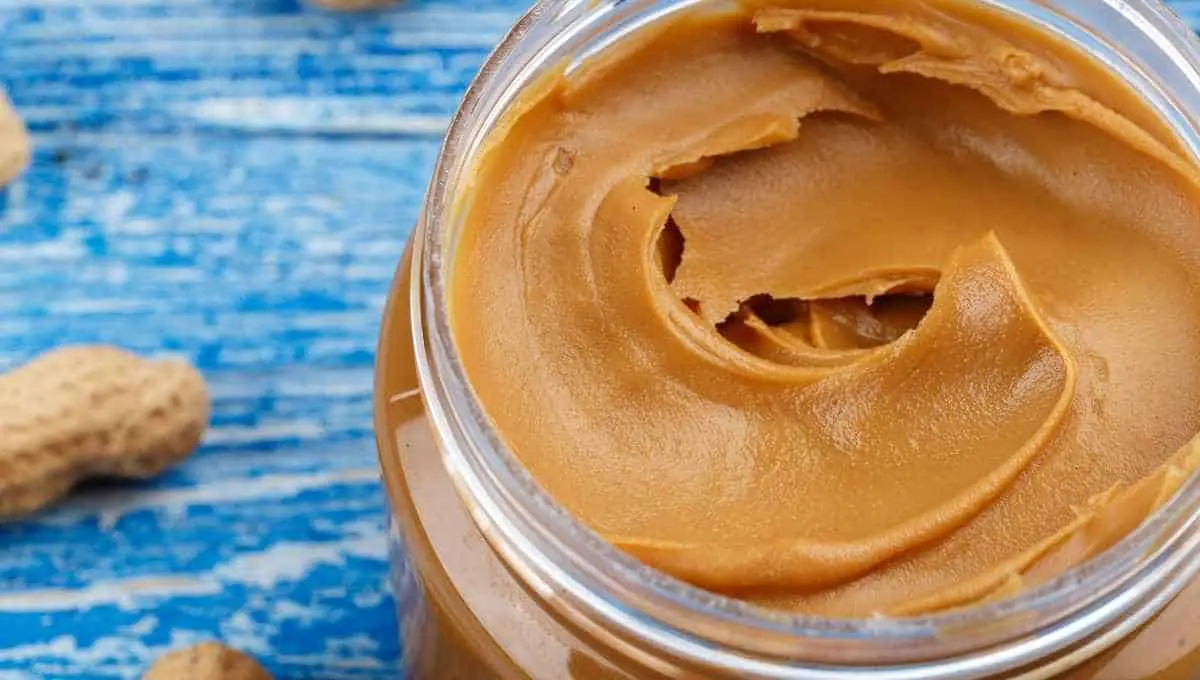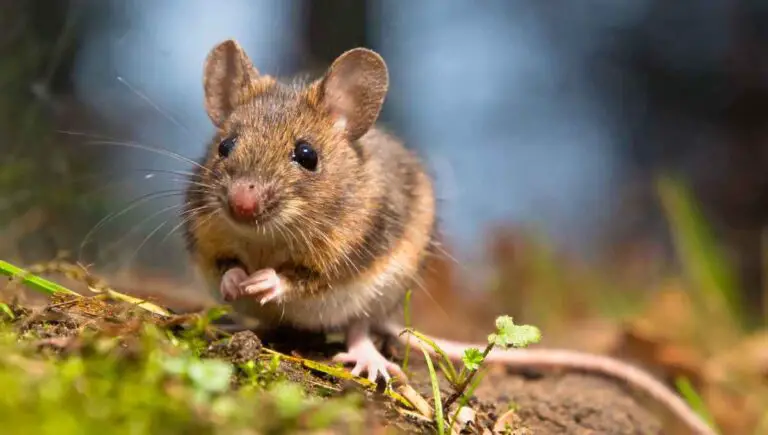Can You Put Peanut Butter on a Glue Trap? (Do This First…)

When people hear the term “glue trap” they often assume it is an inhumane way of killing pests. However, many pest control professionals and homeowners use them as a humane alternative to poison and other chemical-based traps that endanger pets and children. With that being said, can you put peanut butter on a glue trap to lure pests?
You can absolutely put peanut butter on a glue trap to lure pests. One important thing to keep in mind is that you should not smear the peanut butter all over the glue trap. Instead, place a small dollop of peanut butter near the center.
In this blog post, we’re going to explore whether or not you should put peanut butter on glue traps. We’ll also cover the best types of food to lure certain pests, how to use glue traps, and where you can find the best glue traps that work.
This post contains affiliate links. This means Household Blogger may earn a commission should you make a purchase using any of our links. Please refer to our full affiliate disclosure policy for full details.
Here’s a Quick Pro Tip!
While you can put peanut butter on a glue trap to lure pests, another option would be to buy peanut butter scented glue traps. These traps are used much the same way as normal glue traps and will attract creatures to their adhesive surface.
We personally recommend the Catchmaster Peanut Butter Scented Glue Traps on Amazon. These work really well for catching insects, reptiles, as well as mice.
Catchmaster also sells a 72 pack of glue traps, that you can easily add a dollop of peanut butter to in order to lure vermin into your trap.
How to Bait Glue Traps With Peanut Butter
It has been said that the reason peanut butter works well as a rodent attractant is that they like—or even need—something with high-fat content, and peanuts happen to be one of the most calorie-dense foods.
However, if you live in an area where it’s cold during the winter, it might not be safe to put peanut butter on a glue trap because it could become too stiff. Peanut butter can also make the traps slippery; both scenarios will make the traps ineffective.
If you want to go this route, you’ll need to follow these steps:
- Put the bait in the middle of the trap, and shake it so it spreads to all sides.
- Store the traps in an area where there is heat, such as near a stove or furnace.
- Monitor the traps to ensure rodents do not go around them because they will eat up the peanut butter off the sides.
- Check the glue traps frequently to ensure that rodents aren’t caught in them for too long.
If you do not want to use peanut butter on a glue trap, there are other options such as traps that can be placed along the wall and killed instantly when something triggers them.
You could also try using humane steel leg-hold or tunnel-type traps, but be sure to check them frequently so they do not capture animals too long if they are not being set off.
Where Do You Put Peanut Butter on a Glue Trap?
When placing peanut butter on a glue trap, place the peanut butter on the center of the glue trap. If the glue trap is covered in peanut butter, mice will shy away from walking on it.
It works best if you place a spoonful of peanut butter on top of the glue trap. Don’t use your fingers because you will get messy and end up trapping your finger in the glue.
Make sure not to spread the peanut butter all over the glue trap or it won’t work as well.
How Long Does Peanut Butter Last On a Glue Trap?
Peanut butter on a glue trap can last for weeks and still be just as effective. The important thing is to check the trap often so rodents don’t stay stuck on it for too long.
Peanut butter doesn’t have to be placed directly on the glue trap for it to work. In fact, you can attract more mice and other small rodents by placing peanuts or birdseed near the trap.
Where Can You Get Glue Traps That Work?
If you are looking to purchase glue traps that actually work, Amazon has a lot of great ones to choose from.
We personally recommend glue traps from CatchMaster. They are a very well-known brand and are highly rated by previous customers who have used them.
It is probably best to buy a glue trap that doesn’t have any extra areas where the peanut butter can fall off of, otherwise, you might end up with a peanut butter-less trap.
Don’t use too much peanut butter as that will block the mouse from reaching the glue and then you’ll just have a messy trap to clean up.
You might also enjoy our post on Can You Reuse Mouse Glue Traps?
How Do You Get Peanut Butter Off of Glue Traps?
When putting peanut butter on a glue trap, you don’t have to get it off. It will biodegrade over time, but if you want to get the peanut butter off quickly, use cooking oil.
The oil will dissolve the glue from the peanut butter and you’ll be able to wipe it clean with a paper towel or cloth.
Why is Peanut Butter Effective at Trapping Mice?
Mice are attracted to peanut butter due to the oils and fat content. Once they taste it, mice will realize that it is a food source and will be drawn to other locations where there is peanut butter.
The mouse could end up eating the trap but there is no real danger because the trap has a low toxicity level. Mice are smart and will remember not to eat it next time.
Peanut butter is a much healthier alternative than harsh chemical rodenticides.
How Do You Bait a Mouse Trap With Peanut Butter?
To bait a mouse trap with peanut butter, place a small amount of peanut butter in the back of the trap. Make sure not to put too much as that will weigh down the metal bar and cause it to snap on your finger when you try to set it.
The peanut butter should be enough to attract mice into coming into the trap and should also lure them out once they realize there isn’t any peanut butter inside.
Why Do Mice Like Peanut Butter?
Mice like peanut butter because it is one of their favorite foods. It contains oils and is high in fat, which mice need to survive.
Peanut butter is also a good source of protein and can be found in most homes. Mice will risk being caught by a trap to get to the peanut butter because it is that delicious.
What is the Best Mouse Trap Bait?
The best mouse trap bait is a mixture of peanut butter and oats. These two ingredients should be able to attract a mouse into a trap quickly and give you enough time to set it before they can get away from it.
Mix one part peanut butter with three parts oats and spread a small amount into the back of the trap. This mixture will be enough to attract the mouse into the trap but not have them take it with them.
How Effective Are Glue Traps for Mice?
Glue traps are very effective at trapping mice and other rodents that crawl across them. Glue traps are not meant to kill mice, but rather detain them until you release them outside of your home. If you want to kill mice then try using snap traps instead.
Glue traps for mice work by using an adhesive to stick to the mouse once they crawl across it. The adhesive is usually made of a synthetic resin or rubber, and it’s non-toxic to mice.
The adhesive is strong enough that they can’t pull themselves off until someone lets them go. Mice are naturally curious, so they often wander onto the traps without much encouragement.
You can put peanut butter on glue traps to attract mice, but it’s not necessary. Mice are so desperate for food that they’ll crawl onto the traps even if there isn’t anything on them.
How to Dispose of a Live Mouse in a Glue Trap?
To dispose of a live mouse stuck in a glue trap you’ll need to release it outside. Mice are extremely territorial, so if you kill one in your home then others will just move in to take its place.
To release a mouse stuck in a glue trap take the following steps:
- Carefully approach the trap with gloves on to avoid getting stuck yourself.
- Grasp the glue trap by an edge, furthest away from the mouse.
- Gently shake the mouse free, being careful not to get close enough for it to bite you.
- Once the mouse is on the ground bend down and let it go outside.
- Dispose of the trap.
You can also try applying oil to the trap to loosen the adhesive so the mouse can break free.
Don’t forget to keep your gloves on while you’re disposing of the trap. The last thing you want is to be stuck in a glue trap like the mouse was.
Can Mice Smell Glue Traps?
It’s not entirely clear if mice can smell glue traps. Most traps are scented with some sort of attractant, which may help draw the mouse to go near it, but there doesn’t seem to be any scientific evidence that the scent is what brings them in.
Mice rely on their sense of touch more than their sense of smell for tracking down food and finding things like water and mates, so it’s very likely that they can’t detect a trap made out of something like glue at long range.
If they get close enough to feel the rubber or synthetic resin then they might be able to smell it – but once again there’s no scientific evidence one way or another.
There are plenty of substances passive mice can sniff out using their sense of smell, like peanut butter and even cheese.
But for some reason mice are unable to detect the scent of glue traps at long range. Keep this in mind when you’re scoping out the best place to put a trap.
What Do You Do With a Mouse on a Glue Trap?
If you find a mouse stuck in a glue trap, the first thing to do is wear gloves so you don’t get stuck yourself. Gently shake the mouse free and let it loose outside. Dispose of the trap by ripping it up and putting it in your garbage can or outside if no trash can is available.
If you don’t want to touch the mouse, use a stick or some other long object to push it off of the glue trap.
Pick up the trap and put it in a plastic bag before taking it to your outside garbage can.
Can a Mouse Escape a Glue Trap?
While it’s rare, some mice have been known to escape glue traps. This is usually due to a mouse’s size and agility. The larger the mouse, the more likely it is that they will be able to break free.
Mice are also more likely to escape glue traps when the weather is warm. The heat also affects the stickiness of the glue.
During the summer months, mice are able to escape glue traps more often than during the winter months, when the average temperature is cooler. The heat makes the glue less sticky and reduces a mouse’s chances of getting caught.
Smaller, younger mice are more likely to get stuck in glue traps.
Choose glue traps that are covered in a plastic case. This will prevent a mouse from being able to chew off the glue and free itself.
Where Can I Buy Mouse Glue Traps?
You can buy mouse glue traps directly at farm supply stores or other general merchandise stores. You can also purchase sticky mouse traps directly from Amazon.
We personally recommend Catchmaster mouse glue traps. The Catchmaster 72 pack are some of the best ones you can buy regularly. These work extremely well and have great reviews!
Mouse Crying on Glue Trap
Hearing a mouse crying on a glue trap is actually the sound of the mouse panicking. This sound is very loud, which is why it sounds so much like the mouse crying.
However, the mouse is not actually sad or in pain. This noise is actually the mouse’s last attempt to escape before it dies. An open glue trap allows the mouse to breathe, which is why it makes so much noise before dying.
Mice are not usually able to get off of glue traps on their own. They will continue to panic until they die, which can take up to 24 hours.
What Is the Best Mouse Trap Bait
Peanut butter is the most popular mouse trap bait. It works because it’s sticky and oily, which is why it’s perfect for catching mice in glue traps.
Other options are cheese, bacon, or jerky. You can also use chocolate or candy bars to attract mice.
Ultimately the best mouse trap bait is whatever catches your mouse. There isn’t just one type of bait that works better than others, but you will need to experiment with different kinds until you find the one that works for you.
Final Thoughts
No matter what kind of bait you use, it’s important to be smart about where and when you put your mouse glue traps.
Mice are less likely to get stuck in a trap during warm weather months because the heat makes the glue less sticky and reduces their chances of getting caught.
If you notice that mice seem immune to your traps, consider moving them somewhere with better ventilation or changing up the type of bait that is used on them.
You may also want to look into using plastic cases for certain types of adhesive so they can’t chew off the entire thing at once!
Whatever approach you take, don’t give up too soon- there are plenty of ways for this simple product to work effectively if it’s applied correctly!





